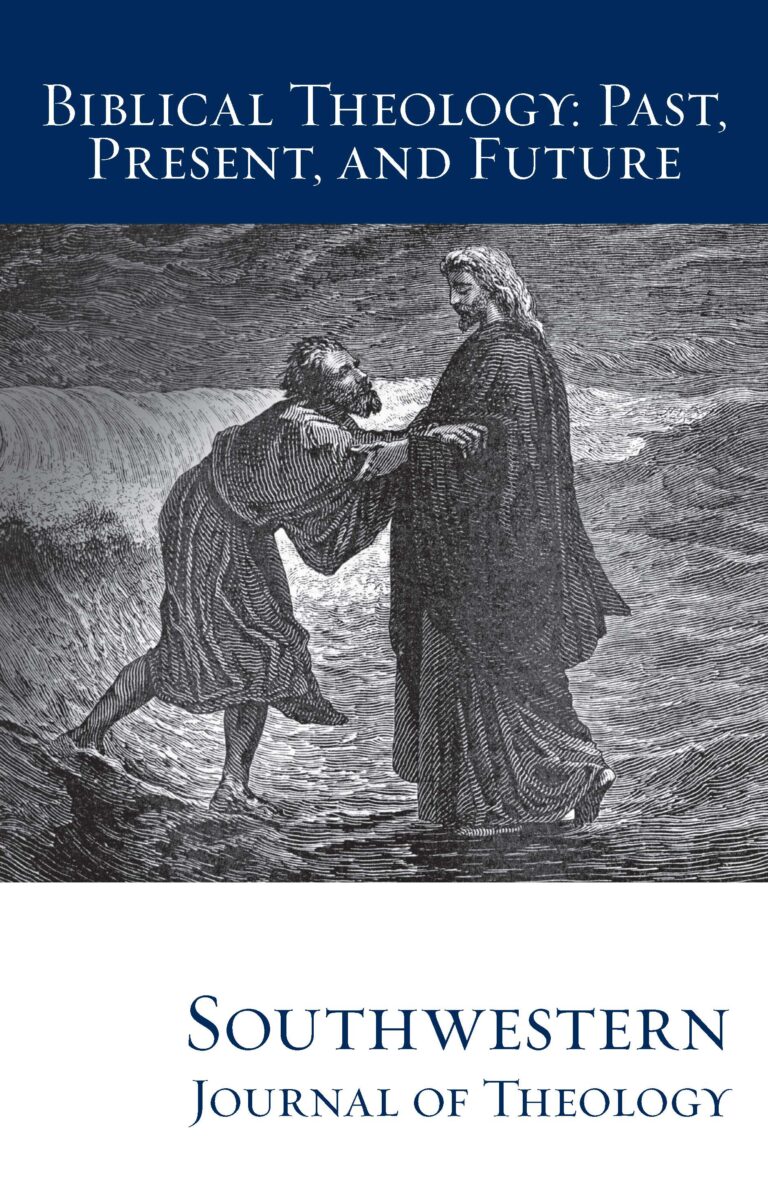
Biblical Theology: Past, Present, and Future (II)
Southwestern Journal of Theology
Volume 56, No. 1 – Fall 2013
Managing Editor: Terry L. Wilder
By Michael Rydelnik. NAC Studies in Bible and Theology. Nashville: B&H Academic, 2010. 206 pages. Hardcover, $19.99.
Michael Rydelnik, professor of Jewish studies at Moody Bible Institute, asks whether Christ is predicted and to what extent he can be seen in the Hebrew Bible. His concern “that the Messiah is a central feature of Old Testament biblical theology” (xvi) embodies a twofold thesis. First, he desires to show that a shift began to take place in the early 18th century regarding the way the church has understood Old Testament messianic prophecies. Beginning with Anthony Collins, J. G. Von Herder, and J. G. Eichorn, he gives a brief historical analysis, concluding that the overwhelming majority of interpreters in the modern period (operating under the influence of Rabbi Shlomo Yitzkhaki’s non-messianic interpretations, 1040–1105) have at least undervalued Old Testament messianic prediction. Second, he wants to show that “reading the Old Testament according to its compositional strategies and canonical shape will yield a clear messianic intent, with far more direct messianic prediction than is commonly held” (33).
It is this second element that dominates the content of the work. Rydelnik understands Old Testament messianic prophecy primarily as strict predictions of Christ instead of forms of general promise. According to him, giving proper attention to compositional strategies of Biblical authors and innerbiblical connections results in interpreting the Old Testament as an eschatological, messianic text. Examining Gen 49:8–12 (in light of Eze 21:27); Num 24:14–19 (in light of Amos 9:11–12); and Deut 18:15–19 (in light of Num 12:6–8 and Deut 34:10–12), Rydelnik argues that textual criticism is necessary in order to see certain messianic prophecies since only variant texts such as the Septuagint reveal these meanings. He also asserts that each Old Testament book included in the Canon “had to have a messianic hope as part of its message” (69). Old Testament writers, he claims, knew that they were writing a messianic message. He offers as evidence Jesus’ words (e.g., Luke 24:25–27, 44–46 and John 5:45–47) and the apostles’ words (Acts 2:29–31; 1 Pet 1:10–12). By examining the four Old Testament quotations in Matthew 2, he argues that the New Testament uses the Old in one of four ways: direct, typical, applicational, and summary. In the final three chapters, Rydelnik, applying his thesis, surveys the various views of Gen 3:15, Isa 7:14, and Psalm 110 and argues that each passage should be seen as strict predictions of Jesus.
Rydelnik’s aim is presented with clarity and force. His argumentation is easy to follow, although the reader may be initially confused as to Rydelnik’s position regarding other types of fulfillment. His examination of the four categories of interpretation evidenced in Matthew 2 and his allowance for elements of historical fulfillment in, for example, explaining the Davidic kingship (74) are evidence that his view is not as restrictive as it may first seem. At least two questions seem to arise from the work. Would the evangelical theologians that he places in the camp of nonmessianic interpretations accept the charge that they do not see the Old Testament as an eschatological and messianic text? Is understanding the Old Testament as promise of an ultimate Messiah, but including the prospect of partial, typical, or progressive historical fulfillment of messianic texts, a move away from interpreting the Hebrew Bible as a messianic book?
Rydelnik’s area of specialization is neither in Old Testament or systematic theology, yet he has done well to enter into both disciplines and contribute to the scholarly discussion of Old Testament prophecy. While not everyone will agree with the trajectory of his canonical reading of the Hebrew Bible, one would find it difficult to deny that he is consciously seeking to be “consistent with the biblical data” (7). Some readers may be uncomfortable with Rydelnik’s canonical redaction, or some of his conclusions which seem to be dependent solely upon a small variant from the MT. What should be appreciated in the work, however, is the intextual (the immediate context), innertextual (the context of the writing as a contained unit), and intertextual (the context of the canon as a whole) connections that Rydelnik alludes to when interpreting the messianic texts. Even if one does not come to the conclusion of direct messianic prediction on a particular text, he should benefit from the connections being made. Many readers may affirm more of a developmental understanding of Old Testament messianic prophecies, including multiple levels of reading Old Testament prophecy and fulfillment. Nonetheless, the connections that Rydelnik affirms could enhance a developmental view and guard against a strictly historical reading that excludes Christological fulfillment of Old Testament messianic prophecy.





